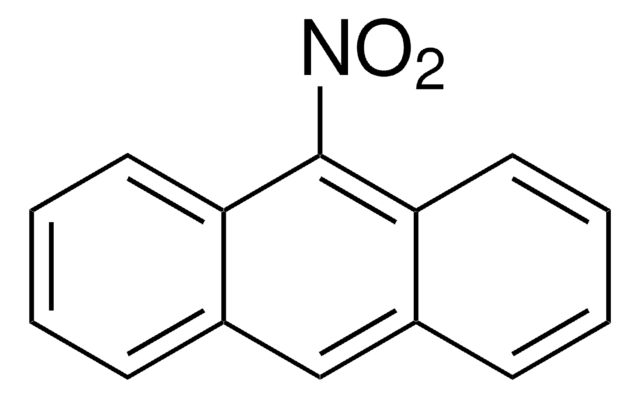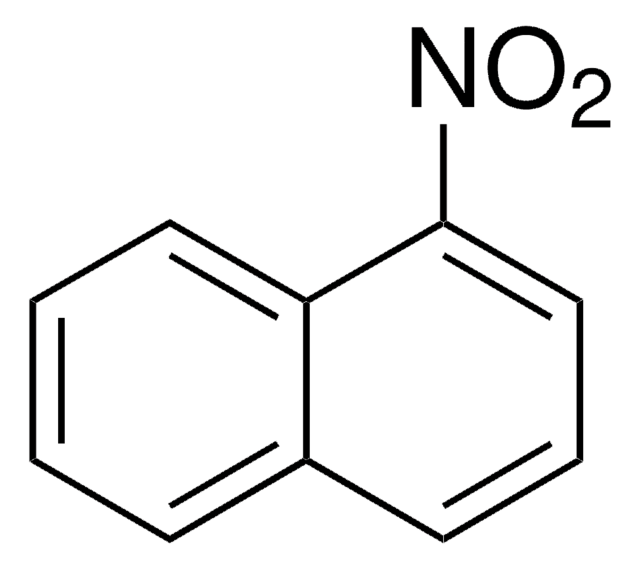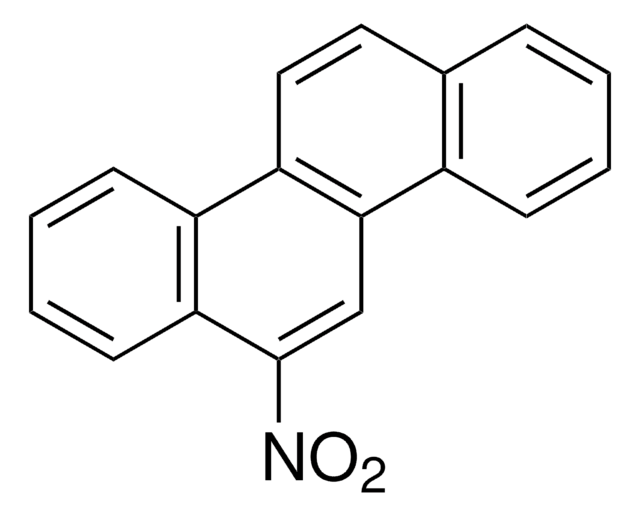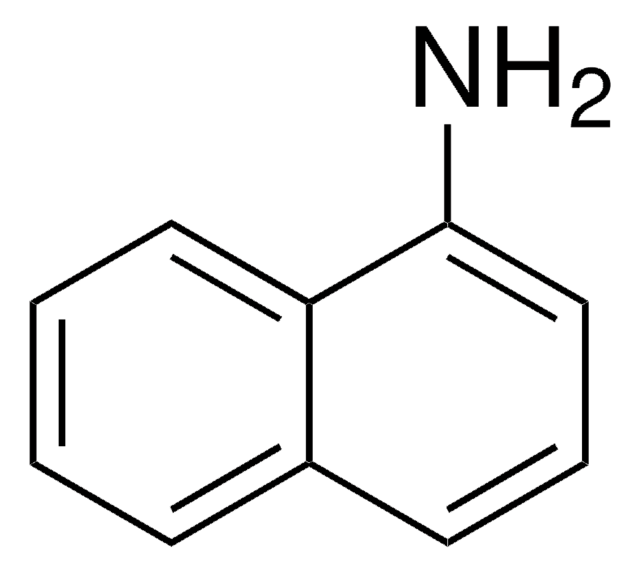About This Item
Recommended Products
Quality Level
Assay
99%
form
solid
bp
304 °C (lit.)
mp
53-57 °C (lit.)
solubility
H2O: insoluble
alcohol: soluble
carbon disulfide: freely soluble
chloroform: soluble
diethyl ether: freely soluble
density
1.223 g/mL at 25 °C (lit.)
SMILES string
[O-][N+](=O)c1cccc2ccccc12
InChI
1S/C10H7NO2/c12-11(13)10-7-3-5-8-4-1-2-6-9(8)10/h1-7H
InChI key
RJKGJBPXVHTNJL-UHFFFAOYSA-N
Looking for similar products? Visit Product Comparison Guide
Related Categories
General description
Application
Biochem/physiol Actions
Signal Word
Warning
Hazard Statements
Precautionary Statements
Hazard Classifications
Acute Tox. 4 Oral - Aquatic Chronic 2 - Flam. Sol. 2
Storage Class Code
4.1B - Flammable solid hazardous materials
WGK
WGK 2
Flash Point(F)
Not applicable
Flash Point(C)
Not applicable
Personal Protective Equipment
Regulatory Listings
Regulatory Listings are mainly provided for chemical products. Only limited information can be provided here for non-chemical products. No entry means none of the components are listed. It is the user’s obligation to ensure the safe and legal use of the product.
FSL
Group 5: Self-reactive substances
Nitro compounds
Hazardous rank I
1st self-reactive materials
JAN Code
103594-100G:
103594-5G:
103594-BULK:
103594-500G:
103594-VAR:
Choose from one of the most recent versions:
Already Own This Product?
Find documentation for the products that you have recently purchased in the Document Library.
Customers Also Viewed
Our team of scientists has experience in all areas of research including Life Science, Material Science, Chemical Synthesis, Chromatography, Analytical and many others.
Contact Technical Service











